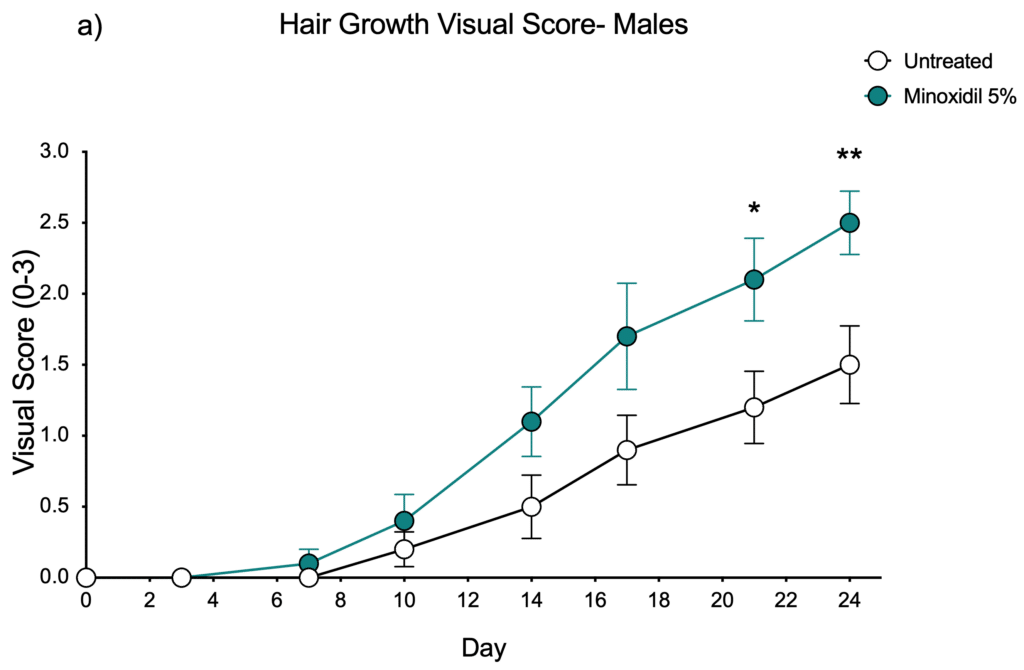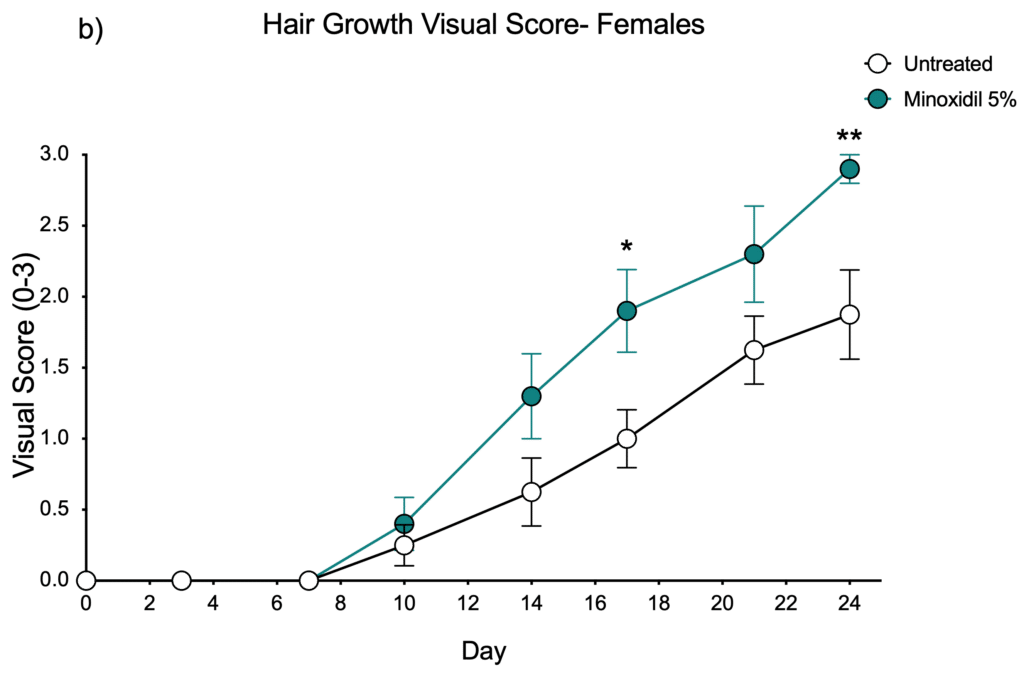Alopecia Model and Hair Growth Assay
Discover how Melior’s unique phenotypic screening platforms can uncover the untapped value of your candidate therapeutic
Alopecia is the medical description for the loss of hair from the head or the body. There are many forms of alopecia, with androgenic alopecia and alopecia areata being the most common. Although alopecia is not life-threatening, it can be life-altering and can produce a profound psychological impact on those afflicted by the disease.
There are several drugs that promote hair growth including Minoxidil (Rogaine®). Nonetheless, the limited effectiveness of available treatments and side effects experienced by some individuals create an ongoing medical need for better agents in the area of hair regrowth discovery.
The data below show the effects of hair regrowth in our validated mouse hair growth model using Minoxidil as a validating agent. We have also validated this model with Finasteride (Propecia®).


Hair Growth Assay. After hair removal, mice were untreated or administered 5% Minoxidil for 25 days and hair re-growth was monitored and visually scored. The figure shows the time course of hair re-growth and the effects of Minoxidil in (a) male and (b) female mice. Minoxidil significantly increased hair growth compared to untreated mice. (Data are mean ± SEM; *p<0.05, **p<0.01).
Scoring system:
| Score | Scale |
| 0 | Initial state-pink/grey skin with no hair growth |
| 0.5 | Skin color changes from pink/grey to bluish or contains dark pigment spots without visible hair growth |
| 1 | Skin color changes from pink/grey to bluish or contains dark pigment spots with visible hair growth (<20% coverage) |
| 1.5 | Grey/blue pigmentation with sparse hair growth
(20-40% coverage) |
| 2 | Grey/blue pigmentation with sparse or diffuse short hair growth
(40-60% coverage) |
| 2.5 | Grey/blue pigmentation with moderate hair growth (60-80% coverage) |
| 3 | Dense, normal coat hair (80-100% coverage) |
